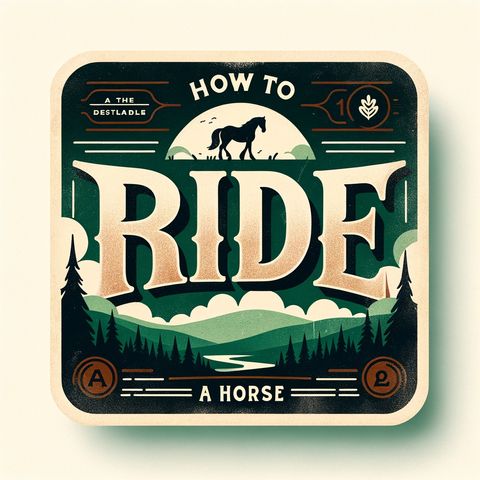7 NOV 2024 · This is a Quiet Please production for more go to http://www.quietperiodplease.com
Welcome to "How to Ride a Horse," where I'll guide you through the exhilarating world of equestrianism. I'm Sarah, your host and experienced equestrian, here to share my passion and knowledge about horseback riding. Today, we'll explore the fundamental techniques and essential tips to help you become a confident and skilled rider.
Let's begin with the basics. Before you even mount a horse, it's crucial to understand that these majestic creatures are sensitive and intelligent animals. Approaching a horse with respect and calmness is key. Always walk towards the horse's shoulder, speaking softly to announce your presence. Horses have blind spots directly in front and behind them, so avoid startling them by approaching from these angles.
Now, let's talk about mounting. Stand on the horse's left side, facing the same direction as the horse. Place your left foot in the stirrup, grab the reins and the front of the saddle with your left hand, and the back of the saddle with your right. Push off with your right foot, swinging your right leg over the horse's back, and gently lower yourself into the saddle. Remember to be smooth and avoid bouncing or landing heavily on the horse's back.
Once you're in the saddle, it's time to focus on your posture. Sit up straight with your shoulders back, but remain relaxed. Your legs should hang naturally with your feet in the stirrups. The balls of your feet should rest on the stirrup bars, with your heels pointing down. This position helps you maintain balance and communicate effectively with the horse.
Now, let's discuss how to hold the reins. There are various ways to hold them, but for beginners, I recommend the bridge method. Hold the reins between your thumb and index finger, with the excess rein falling on the opposite side of the horse's neck. Your hands should be about four inches apart, creating a "bridge" over the horse's withers.
Communication with your horse is essential, and it's done through a combination of leg pressure, rein control, and body position. To move forward, gently squeeze your legs against the horse's sides. To stop, sit deep in the saddle, stop moving with the horse, and pull back gently on the reins while saying "whoa." Turning is achieved by applying pressure with your leg on the side you want to turn towards while gently pulling the rein on that side.
As you become more comfortable, you'll learn to use your seat and weight to communicate with the horse. This is called "riding with your seat," and it's a more advanced technique that allows for subtle communication between rider and horse.
Now, let's talk about gaits. Horses have three natural gaits: walk, trot, and canter. The walk is a four-beat gait and the slowest. The trot is a two-beat gait where diagonal pairs of legs move together. It can be challenging for beginners, as it involves more bounce. The canter is a three-beat gait that's faster and smoother than the trot.
When trotting, you'll need to learn how to post. Posting involves rising and lowering your body in rhythm with the horse's movement. This makes the ride more comfortable for both you and the horse. To post, use your legs to push yourself slightly out of the saddle as the horse's outside front leg moves forward, then gently lower yourself as it touches the ground.
Remember, horseback riding is as much about building a relationship with your horse as it is about technique. Spend time grooming and bonding with your horse before and after rides. This helps establish trust and makes for a more enjoyable riding experience.
Safety is paramount in horseback riding. Always wear a properly fitted riding helmet, boots with a small heel to prevent your foot from slipping through the stirrup, and comfortable, close-fitting clothes. Be aware of your surroundings and any potential hazards.
As you progress, you'll discover that horseback riding is not just a sport, but an art form. It requires patience, practice, and a deep understanding of horse behavior. Don't be discouraged if you don't master everything immediately. Like any skill, it takes time to develop.
In conclusion, horseback riding is a rewarding and exhilarating activity that offers a unique connection with nature and these magnificent animals. Remember to always approach riding with respect for the horse and a commitment to safety. With practice and persistence, you'll find yourself enjoying the freedom and joy that comes with riding. So, saddle up, and let's hit the trails!


